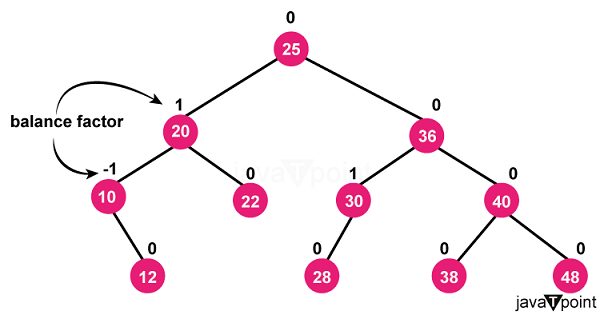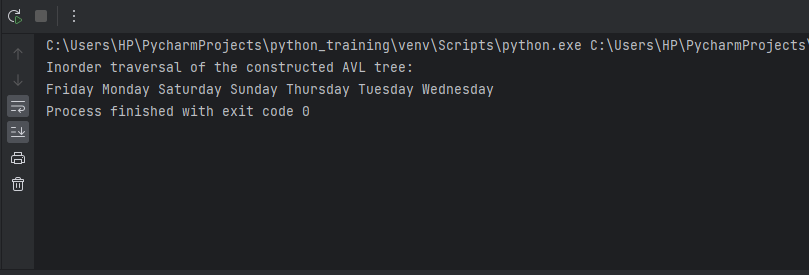How to insert Strings into an AVL TreeAVL trees are an advantageous data structure for organizing strings and enabling quick searches, inserts, and deletes. Balancing an AVL tree ensures no branch becomes much longer than others, allowing these operations to be completed in O(log n) time. However, inserting strings presents unique challenges compared to numeric data since string comparison relies on lexicographic rather than numeric order. Correctly inserting strings in an AVL tree requires using the correct comparison logic when searching for the insertion point and then leveraging tree rotations to rebalance the structure. This article will provide clear guidelines on best leveraging AVL trees' self-balancing capabilities to insert strings while maintaining optimal efficiency. We will cover the vital topics of string comparison, insertion logic, height updating, and tree rotations - mastering these techniques is critical to keeping your string AVL tree balanced even after frequent inserts. What are AVL Trees?AVL trees are height-balanced binary search trees, allowing efficient search, insertion, and deletion operations. The critical characteristic of an AVL tree is that, for each node, the heights of the left and right subtrees differ by at most 1. This ensures the tree remains roughly balanced during insertions and deletions. To understand why balancing is necessary, consider a regular binary search tree. As elements are inserted, the tree can become skewed so that one branch becomes much longer. In the worst case, the tree essentially becomes a linked list, requiring O(n) time for search, insert, and delete. An AVL tree maintains balance through tree rotations after inserts or deletes. Rotation is an operation that rearranges nodes in a tree while maintaining the binary search tree property - left subtree values ≤ current node < right subtree values. Rotations ensure the tree only needs to grow downward by one node before rebalancing resumes. The operations needed to balance an AVL tree add a slight overhead to insertion and deletion. But they allow these operations to complete in O(log n) time on average. Searches in a balanced AVL tree also take O(log n) time. 
Factors Affecting the Insertion in AVL TreesHere are the key factors to consider when inserting an element/string into an AVL tree in a point-wise format: 1. Insertion Point
2. Insert Element
3. Update Heights
4. Check Balance Factors
5. Perform Rotations
6. Repeat Up the Tree
The key challenges are properly comparing strings vs numbers, updating metadata like heights after insertion, and picking the correct rotation at unbalanced nodes to restore balance. Managing these key steps is essential for keeping an AVL tree's efficiency intact after insertions. Algorithm to Insert String in AVL TreeInsertion Algorithm The main steps to insert a string into an AVL tree are:
To insert, start at the root and traverse the tree, comparing the string lexicographically at each node. Keep traversing left/right based on comparison until a null spot is found, and insert the new string there. After insertion, the tree may need rebalancing. Each node maintains a height property - the max depth of subtrees under it + 1. Update heights and check "balance factors" from the new node towards the root. The balance factor is: left subtree height - right subtree height For AVL trees, this must be 1, 0 or -1. If not, rotate that sub-tree. There are 4 rotation types:
Pick rotation based on the structure of the sub-tree at that point. Example: Consider inserting "dog" into the tree: 1. Traverse left at cat (d comes before c) 2. Traverse right at the ball (dog comes after b) 3. Insert dog at null node 4. Update heights from the dog up the tree 5. No rotations are needed. The tree is still AVL! Python ImplementationOutput: 
Explanation:
The core logic lies in the _insert() function and how it leverages the rotate functions to balance subtrees when needed after new keys are inserted. This enables efficient inserts. Conclusion:Inserting strings into an AVL tree requires careful handling to maintain balance and efficiency, which are the hallmarks of AVL data structures. Following proper string comparison to locate the insertion point, adding the new node, updating metadata, and performing any necessary rotations ensures strings can be added while keeping the tree optimization intact. When collisions lead to rebalancing, left, right, left-right, or right-left rotations can strategically rearrange nodes to restore balance across all branches. By mindfully accounting for the unique properties of strings and leveraging rotations to counterbalance new additions, AVL trees can support efficient search, insert and delete even with increasingly lengthy strings. Ultimately, combining string handling fundamentals with understanding AVL balanced trees allows your application to scale and perform regardless of the text-based data it absorbs.
Next TopicLongest Consecutive Subsequence
|
 For Videos Join Our Youtube Channel: Join Now
For Videos Join Our Youtube Channel: Join Now
Feedback
- Send your Feedback to [email protected]
Help Others, Please Share










